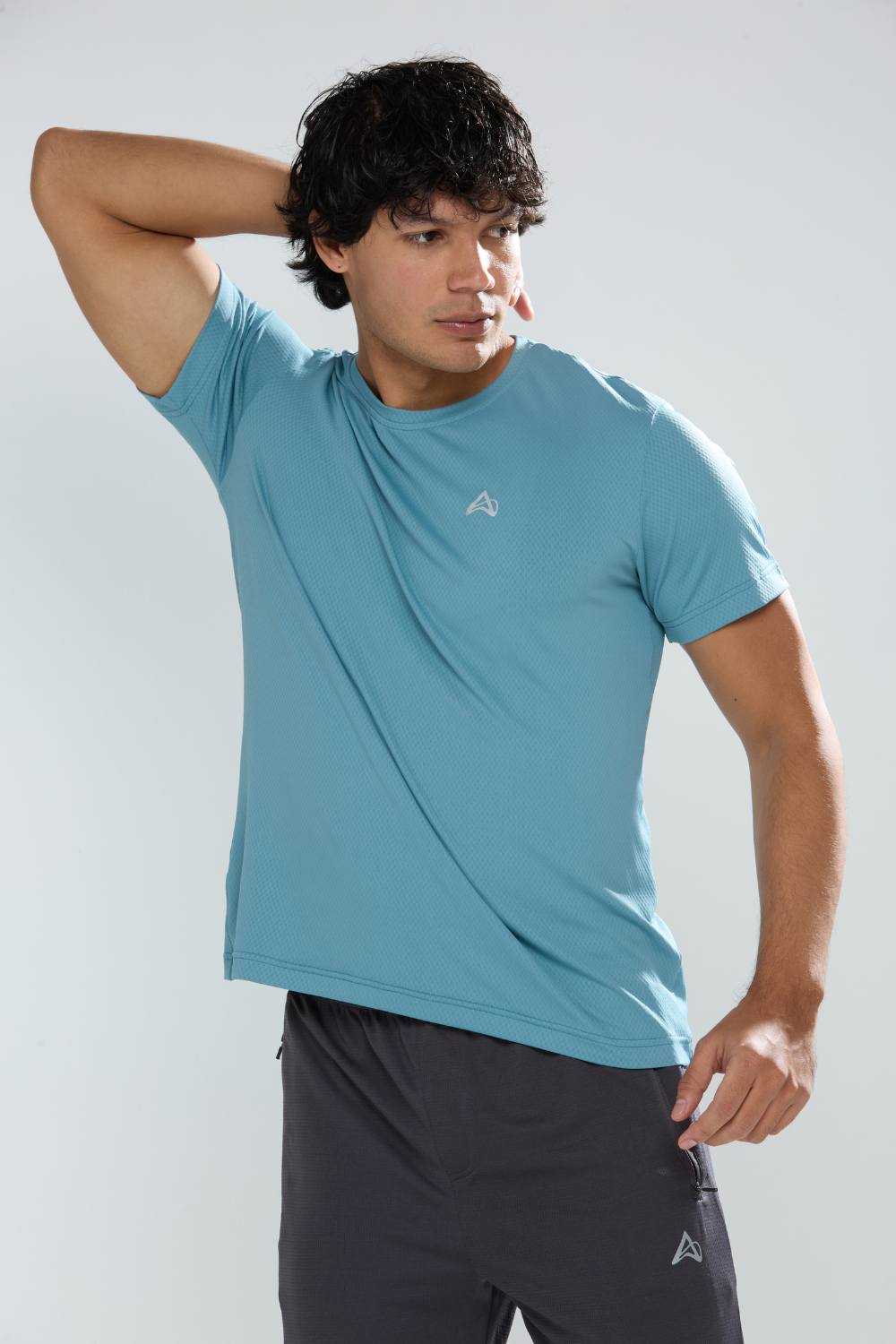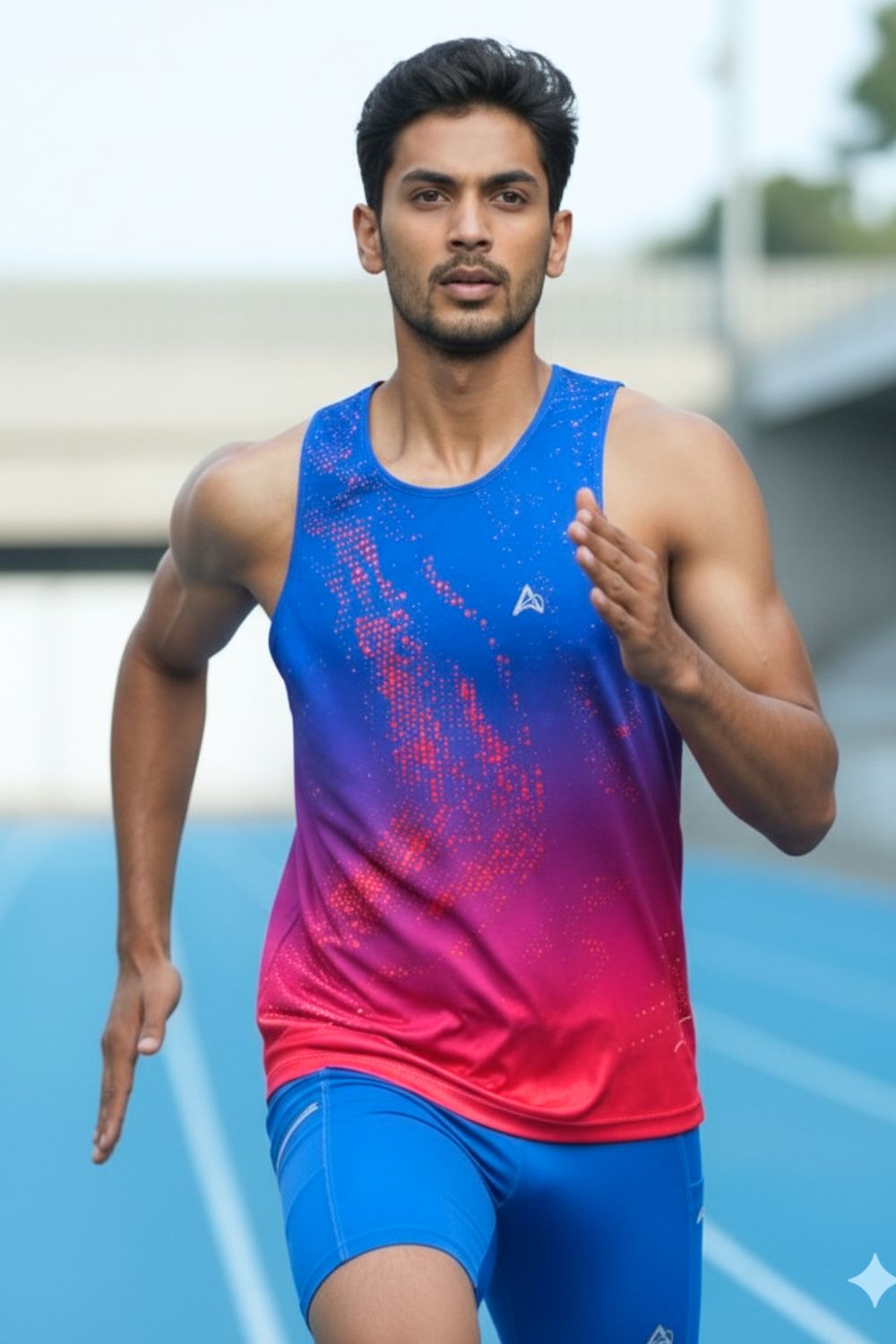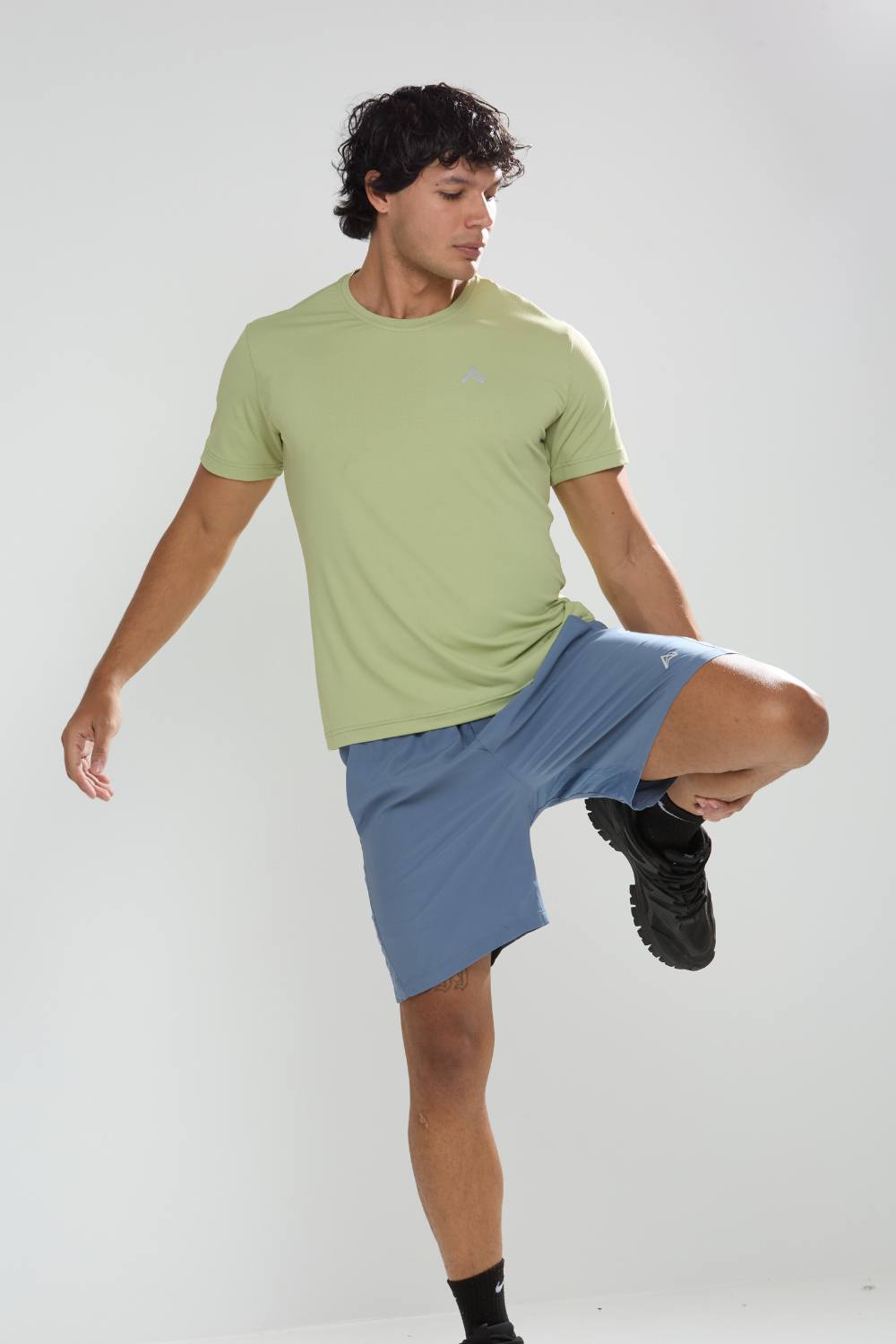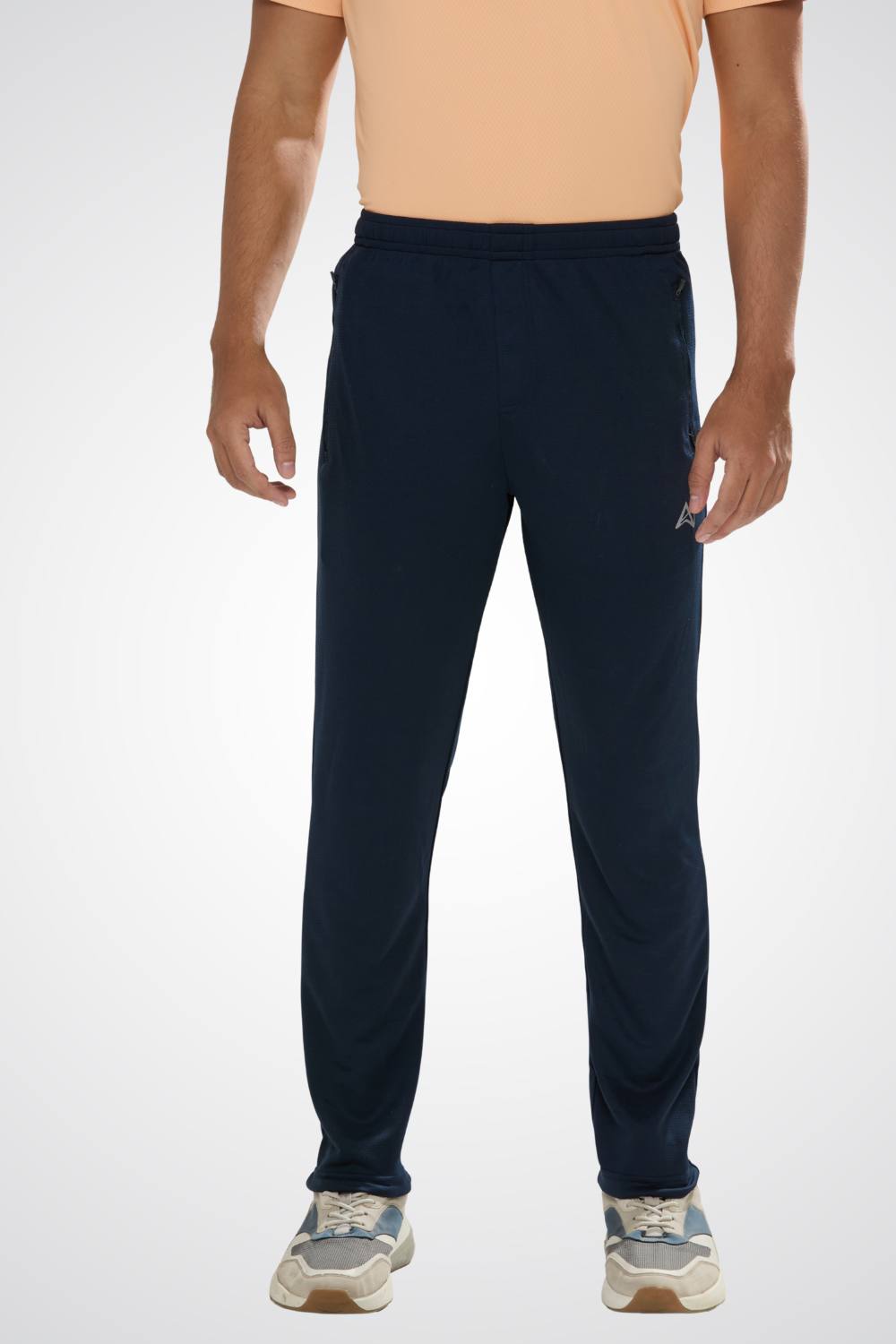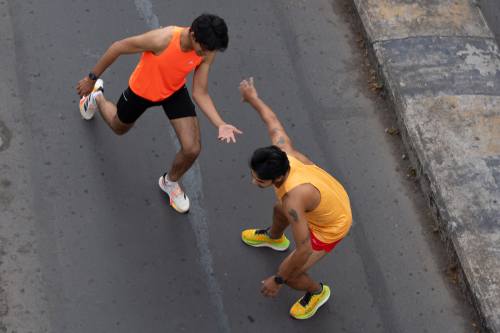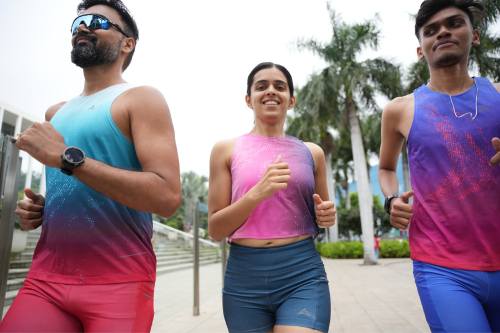Quick Listen:
In the pre-dawn glow of city streets, where the hum of traffic is just a whisper, urban runners weave through concrete jungles, their footsteps echoing a quiet rebellion against sedentary life. From New York's Central Park to Mumbai's Marine Drive, the surge of recreational and competitive running has transformed cities into sprawling tracks. But with this rise comes a hidden cost: injuries from pounding unforgiving pavement, dodging traffic, or pushing too hard without guidance. For these runners, coaching once reserved for elite athletes is emerging as a lifeline, blending cutting-edge apparel and technology to keep them moving safely.
Tired of gear that slows you down? Chafing, soggy fabrics, and missing pockets kill your run's momentum. At Aguante, we're runners who get it. Our high-performance activewear features moisture-wicking fabrics, ergonomic designs, and smart storage to keep you focused. Shop Now!
The Urban Running Boom
The sidewalks of global cities are busier than ever with runners lacing up for fitness, community, or competition. Urban running has exploded, fueled by a cultural shift toward health and wellness. According to a report from the IMARC Group, the global sports coaching platforms market hit USD 575.4 million in 2024 and is projected to soar to USD 1,641.7 million by 2033, growing at a brisk 12.36% annually. This boom isn't just about running shoes or fitness apps it's about a deeper demand for structured guidance. Runners, from weekend warriors to marathon hopefuls, are turning to coaching platforms that use analytics, video analysis, and personalized plans to fine-tune performance and prevent injuries.
Why the surge? Cities breed a unique breed of runner: time-strapped, ambitious, and often navigating crowded streets or uneven surfaces. Running clubs have sprouted in urban hubs, offering camaraderie and structure, while online platforms deliver tailored coaching to those who can't make a 6am group run. The appeal is clear: coaching isn't just about speed it's about staying in the game.
Coaching Meets Technology
Today's urban runner isn't just relying on a stopwatch and a good playlist. Wearables smartwatches, heart-rate monitors, and even shoe sensors are feeding data to coaching platforms that analyze every stride. These tools, as noted in the IMARC report, include performance tracking, real-time feedback, and injury prevention modules. Imagine a runner in Chicago getting instant feedback on their gait via an app, or a Mumbai jogger receiving a tailored plan to correct overpronation. This tech-driven approach is reshaping how runners train, making coaching accessible beyond the elite.
Activewear brands are also stepping up, designing gear that complements these platforms. Shoes with shock-absorbing soles, compression tights that stabilize muscles, and posture-supporting tops are no longer just fashion statements they're engineered to align with biomechanical insights from coaches. Brands are increasingly partnering with physiologists to create apparel that reduces strain on joints, particularly for runners pounding urban pavement. The result? A synergy where technology, coaching, and apparel work together to keep runners injury-free.
Real Runners, Real Impact
Consider the urban runner who joins a local running club, only to limp home with shin splints after a few weeks. This is where coaching shines. Platforms now offer video analysis to spot form flaws like overstriding or heel striking that lead to injuries. One runner in London, part of a growing online coaching community, shared how her coach used sensor data to adjust her cadence, cutting her risk of knee pain. Another in São Paulo credited a personalized training plan for helping her avoid a stress fracture during marathon prep.
Brands are taking note. Some activewear companies sponsor running clubs, offering gear discounts or hosting workshops with trainers. Others collaborate with coaching platforms to bundle services with their products buy a pair of high-tech running shoes, get a month of free coaching. These partnerships aren't just savvy marketing; they're responding to a real need. Urban runners, facing hard surfaces and chaotic routes, are hungry for solutions that let them run longer and safer.
The Challenges of Urban Running
City running isn't all scenic park loops and sunrise sprints. Hard concrete surfaces jar joints, increasing the risk of shin splints or stress fractures. Traffic-dodging weaves and sudden stops strain muscles. And for many, poor form often unnoticed without a coach amplifies these risks. The IMARC report highlights injury prevention as a key application of coaching platforms, yet access remains a hurdle. Qualified coaches are often expensive, and in some cities, they're scarce. For every runner with a sleek app or wearable, others rely on guesswork, hoping enthusiasm alone will carry them through.
Activewear brands face their own challenges. Designing gear that balances performance, injury prevention, and sustainability is no small feat. Compression gear must support without constricting; shoes need cushioning without sacrificing speed. And as consumers demand eco-friendly materials, brands must innovate without compromising function. These tensions underscore the need for cross-industry collaboration apparel, tech, and coaching working in lockstep.
Opportunities for Brands and Runners
For activewear brands, the urban running boom is a goldmine of opportunity. Coaching platforms are becoming a value-added service, with some brands offering subscriptions alongside their gear. Picture buying a pair of running tights and getting access to a platform that tracks your stride and suggests recovery stretches. Brands are also leaning into injury prevention, designing shoes with enhanced cushioning or apparel that supports proper posture. These innovations align with the IMARC report's emphasis on personalized training and health-focused solutions driving market growth.
Community engagement is another win. Urban running groups, whether in-person or virtual, are hubs for brand loyalty. Sponsoring a local 5K or hosting a gait-analysis clinic can turn casual runners into lifelong customers. And as coaching platforms grow, brands have a chance to integrate their products into digital ecosystems think smart shoes that sync with an app to warn of overexertion. The potential is vast, but it hinges on understanding the urban runner's needs: performance, safety, and a sense of belonging.
A Smarter, Safer Future
As urban running continues its ascent, injury prevention is becoming a defining factor in both coaching and apparel. Sports medicine experts predict a future where data-driven coaching is standard, with platforms using AI to predict injury risks before they strike. Apparel designers, meanwhile, are exploring fabrics that adapt to a runner's movements, offering support where it's needed most. The IMARC Group's forecast of a USD 1,641.7 million coaching market by 2033 suggests this isn't a passing trend it's a transformation.
Picture a runner in 2033, darting through a city's streets, their shoes syncing with a coaching app that adjusts their pace in real time. Their gear, designed with input from physiologists, absorbs the shock of each step. They're part of a global community, connected through platforms that make coaching as accessible as a morning jog. For urban runners, the future isn't just about running faster it's about running smarter, safer, and for years to come.
Frequently Asked Questions
Why are urban runners more prone to injuries than other runners?
Urban runners face unique challenges that increase injury risk, including hard concrete surfaces that jar joints and cause shin splints or stress fractures, traffic-dodging that requires sudden stops and weaves that strain muscles, and often poor running form that goes unnoticed without proper coaching. The unforgiving pavement and chaotic city routes create a perfect storm for injuries that coaching platforms and specialized activewear are now addressing through biomechanical insights and injury prevention technology.
How do running coaching platforms help prevent injuries for city runners?
Modern coaching platforms use wearables like smartwatches and shoe sensors to analyze every stride, providing real-time feedback on gait issues such as overstriding or heel striking that lead to injuries. These platforms offer video analysis to spot form flaws, personalized training plans based on sensor data, and AI-driven insights that can predict injury risks before they occur. The global sports coaching platforms market, valued at $575.4 million in 2024, is projected to reach $1.64 billion by 2033, largely driven by demand for injury prevention and performance tracking features.
What role does activewear play in urban running injury prevention?
Today's running apparel goes beyond fashion to become engineered injury prevention tools, with brands partnering with physiologists to create gear that reduces strain on joints from urban pavement pounding. This includes shoes with enhanced shock-absorbing soles and cushioning, compression tights that stabilize muscles and support proper posture, and smart fabrics that adapt to a runner's movements. Many activewear brands now bundle their high-tech gear with coaching platform subscriptions, creating a synergy where technology, coaching, and apparel work together to keep urban runners injury-free and running longer.
Disclaimer: The above helpful resources content contains personal opinions and experiences. The information provided is for general knowledge and does not constitute professional advice.
You may also be interested in: Breathable Singlets Support Long-Distance Training
Tired of gear that slows you down? Chafing, soggy fabrics, and missing pockets kill your run's momentum. At Aguante, we're runners who get it. Our high-performance activewear features moisture-wicking fabrics, ergonomic designs, and smart storage to keep you focused. Shop Now!
Powered by flareAI.co





